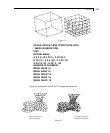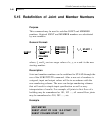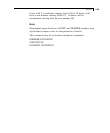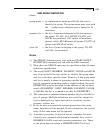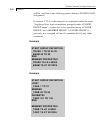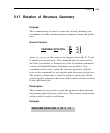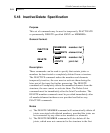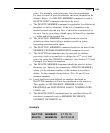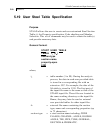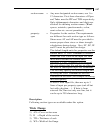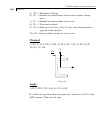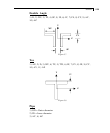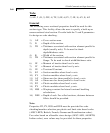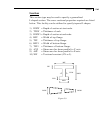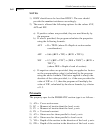
Section 5
5-55
place. For example, such joints may have been generated
for ease of input of joint coordinates and were intended to be
deleted. Hence, if a DELETE MEMBER command is used, a
DELETE JOINT command should not be used.
c) The DELETE MEMBER command is applicable for deletion of
members as well as elements. If the list of members to be
deleted extends beyond one line, it should be continued on to
the next line by providing a blank space followed by a hyphen
(-) at the end of the current line.
d) The INACTIVE MEMBER command cannot be used in
situations where inactivating a member results in joints
becoming unconnected in space.
e) The INACTIVE MEMBER command should not be used if the
MEMBER TENSION/COMPRESSION command is used.
f) The INACTIVated members may be restored for further
processes (such as an analysis or design for a 2
nd
set of load
cases) by using the CHANGE command. See Section 5.37 and
Example 4 for more information.
g) The DELETE MEMBER command should be used to delete
elements too. Specify the command as DELETE MEMBER j
where j is the element number of the element you wish to
delete. In the example shown below, 29 to 34 and 43 are
element numbers.
h) Loads that have been defined on members declared as
INACTIVE members will not be considered in the analysis.
This applies to SELFWEIGHT, MEMBER LOADS,
PRESTRESS and POSTSTRESS LOADS, TEMPERATURE
LOADs, etc.
i) The DELETE JOINT command must be specified before all
incidence commands such as MEMBER INCIDENCE,
ELEMENT INCIDENCE, etc.
Example
INACTIVE MEMBERS 5 7 TO 10
DELETE MEMBERS 29 TO 34 43



